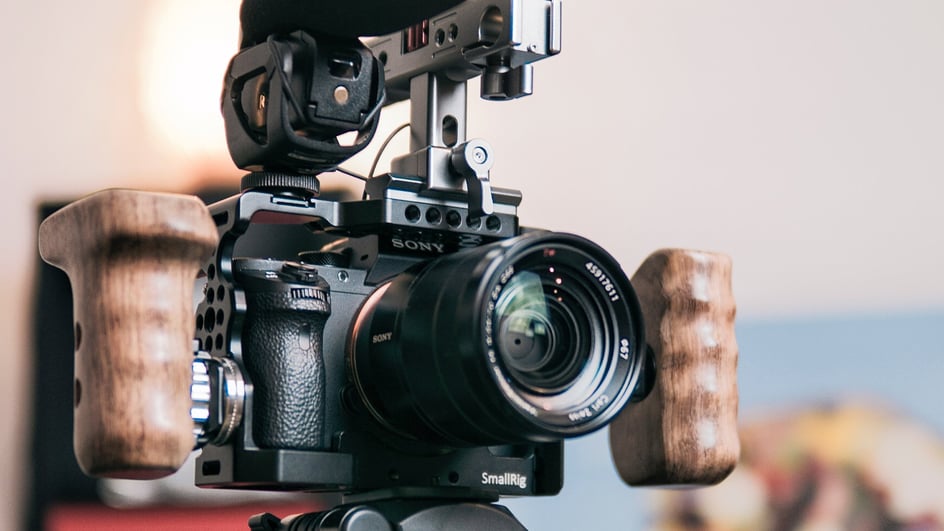“When the pandemic started” is a dystopian-esque way to begin a blog post but — given these very real global circumstances — here we are:
When the pandemic started, filmmakers had to stop productions, part ways with their crews, and stay at home. Fast forward to now and many productions are starting back up again, or for the first time.
But this isn’t without challenges.
Not only does the pandemic still pose real health and safety risks to creative teams, but it’s also financially taxing as well.
In the video above, filmmaker Matt Johnson discusses how the shortage in computer parts, and specifically graphic cards, has skyrocketed the costs of most video editing laptops to well over $1,000.
It’s not always possible to spend several thousands of dollars on a high end video editing laptop, especially when production budgets are tight. So you need alternatives that make sense for your workflow and budget.
Luckily, Matt’s got you covered here.
Let’s take a look at his recommendations for budget-friendly laptops that — at the time his video was filmed — are under $1,000.
(Note: All of the prices mentioned were verified at the time of this post’s publication.)
1. ASUS VivoBook
The ASUS VivoBook line is known for being well-built for the price, and the version that Matt recommends — the M515UA-NS77 — comes in at $650.
Pros:
- - This is the most affordable video editing laptop featured in Matt’s list.
- - There is a Ryzen 5700U processor inside this laptop with 8 cores and 16 threads of performance (which is exactly what you need for video editing).
- - There is a 512GB SSD, 16GB of RAM, and two USB 3.2 ports (one is a USB type C).
Cons:
- - The screen quality is subpar and isn’t very color accurate, which means that you’d probably need to use a color accurate external monitor as well.
- - The battery life isn’t long-lasting. According to Matt, you should expect 3-5 hours of battery life when video editing.
- - There are two USB 2.0 ports, which you might not think is a con until you try to plug in an external hard drive and your editing process slows down.
2. Lenovo Flex 5
The LENOVO Flex 5 comes in at $750, making it the second most affordable option in Matt’s list. If you opt for this laptop, just be sure that you buy the model that comes with an AMD Ryzen 5700U processor and 16GB of RAM.
Pros:
- - This laptop has a flexible build, which is to say that you can flip the screen over and use it as more of a tablet than a laptop.
- - The keyboard and trackpad are well-made.
- - There is a 512GB SSD, a USB 3.2 type A and type C port, an HDMI 2.0 port, and an SD card slot.
- - The 8 cores and 16 threads of performance means that there’s a good amount of power for video editing and it’s still power efficient.
Cons:
- - Like the ASUS laptop, the screen quality is a bit lackluster in the sense that it isn’t 100% color accurate. Specifically, it has a 60Hz panel.
- - Unlike many other laptops, the LENOVO manufacturers solder the RAM to the motherboard which means that you can’t replace the existing RAM with faster RAM. (But this isn’t an issue as long as you get the version with 16GB of RAM.)
3. HP ENVY x360
Matt’s next recommendation for budget-friendly laptops is the HP ENVY x360. As it is, the laptop is priced at $700, but this price jumps up to $980 when you make these important upgrades:
- - $120 to upgrade the CPU to the Ryzen 7 5700U
- - $80 to upgrade the screen to the 400 nits model (which makes this laptop extremely color accurate for color correction and grading)
- - $80 to upgrade the RAM to 16GB
Pros:
- - With these three upgrades, you’re still under budget at $980.
- - HP’s customization page lets you make these customizations and more to improve the laptop’s video editing capabilities.
- - The 400 nits screen covers 100% of the sRGB color space.
- - You can also upgrade the hard drive to 512GB ($60).
Cons:
- - The price point is on the higher end of these options.
4. Macbook Air
Apple’s Macbook Air with the M1 chip comes in just under the $1,000 price limit and is a great alternative to the more expensive high-end video editing laptops.
Pros:
- - In Matt’s own words, this model with the M1 chip has a “stellar battery life” and color accurate screen.
- - The M1 chip is powerful and capable of editing 4K video.
- - DaVinci Resolve is natively supported.
- - Final Cut Pro runs well on this laptop.
Cons:
- - The 13-inch screen isn’t everyone’s cup of tea, so if you want something larger, Matt recommends the HP ENVY x360.
- - Adobe Premiere Pro is still in its beta version on this laptop, which means that the editing capabilities are slightly more limited.
- - The price point is right at the budget maximum.
Want to learn more about your options? You can find each of these budget 4K video editing laptops here.
Looking for The Best $1,500+ Laptops in 2021?
The laptops we’ve shared in this post are great for editing 4K video, but what if you want to edit 6K or even 8K video?
If you’re in the market for a video editing laptop with more high-end capabilities — and have room in your budget to make a bigger purchase — Matt shares three laptop recommendations ($1,500+) in this follow-up video.
Whatever your budget or preferences might be, these videos offer a lot of great insight to help you know exactly what to look for when purchasing a new video editing laptop.
